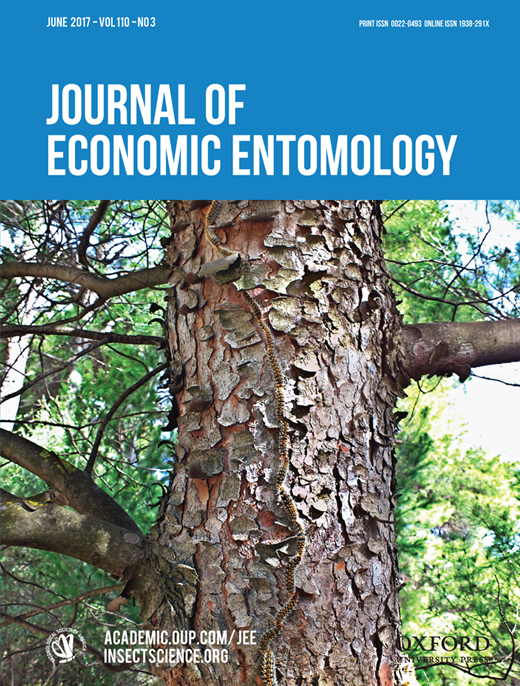Ver ítem
- xmlui.general.dspace_homeCentros Regionales y EEAsCentro Regional Mendoza - San JuanEEA MendozaArtículos científicosxmlui.ArtifactBrowser.ItemViewer.trail
- Inicio
- Centros Regionales y EEAs
- Centro Regional Mendoza - San Juan
- EEA Mendoza
- Artículos científicos
- Ver ítem
EF-1α DNA Sequences Indicate Multiple Origins of Introduced Populations of Essigella californica (Hemiptera: Aphididae)
Resumen
Aphids in the pine-feeding Nearctic genus Essigella (Sternorrhyncha, Aphididae, Lachninae) have been introduced in Europe, North Africa, Oceania, and South America. Mitochondrial, nuclear, and endosymbiont DNA sequences of 12 introduced populations from three continents confirm they all belong to Essigella californica (Essig, 1909). Intron sequence variation of the nuclear gene EF-1α has revealed the existence of four distinct groups. Group I gathers one
[ver mas...]
Aphids in the pine-feeding Nearctic genus Essigella (Sternorrhyncha, Aphididae, Lachninae) have been introduced in Europe, North Africa, Oceania, and South America. Mitochondrial, nuclear, and endosymbiont DNA sequences of 12 introduced populations from three continents confirm they all belong to Essigella californica (Essig, 1909). Intron sequence variation of the nuclear gene EF-1α has revealed the existence of four distinct groups. Group I gathers one population from China, where the species is newly reported, and several from Europe (France and Italy); Group II is represented by one population from Argentina; Group III includes two populations from Southern Australia with one from New Zealand; and Group IV corresponds to five populations from Eastern and South-Eastern Australia. These results indicate that introduced populations of E. californica have at least four source populations. They also show that intron variation of EF-1α can be a method to discriminate populations of asexually reproducing aphids.
[Cerrar]

Autor
Théry, Thomas;
Brockerhoff, Eckehard G.;
Carnegie, Angus J.;
Rui, Chen;
Elms, Stephen R.;
Hullé, Maurice;
Glatz, Richard;
Ortego, Jaime;
Ge-Xia, Qiao;
Turpeau, Évelyne;
Favret, Colin;
Fuente
Journal of Economic Entomology 110 (3) : 1269–1274 (June 2017)
Fecha
2017-06
ISSN
0022-0493
1938-291X
1938-291X
Formato
pdf
Tipo de documento
artículo
Palabras Claves
Derechos de acceso
Restringido
 Excepto donde se diga explicitamente, este item se publica bajo la siguiente descripción: Creative Commons Attribution-NonCommercial-ShareAlike 2.5 Unported (CC BY-NC-SA 2.5)
Excepto donde se diga explicitamente, este item se publica bajo la siguiente descripción: Creative Commons Attribution-NonCommercial-ShareAlike 2.5 Unported (CC BY-NC-SA 2.5)

